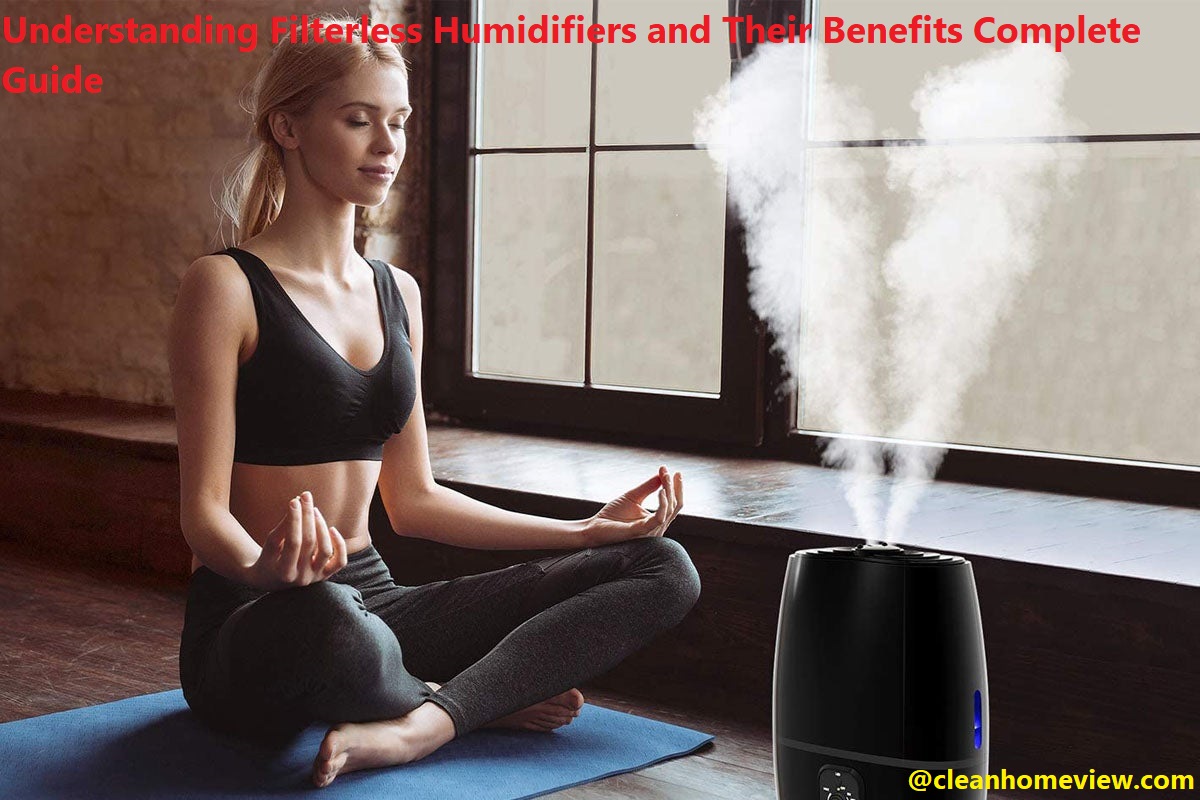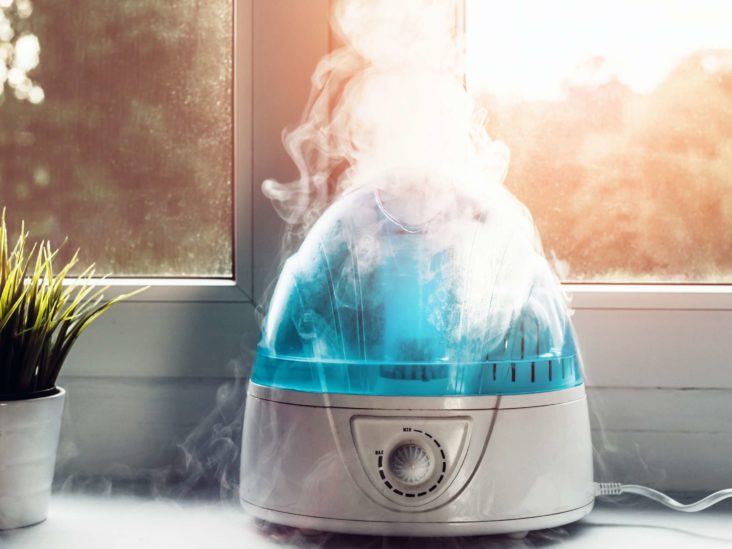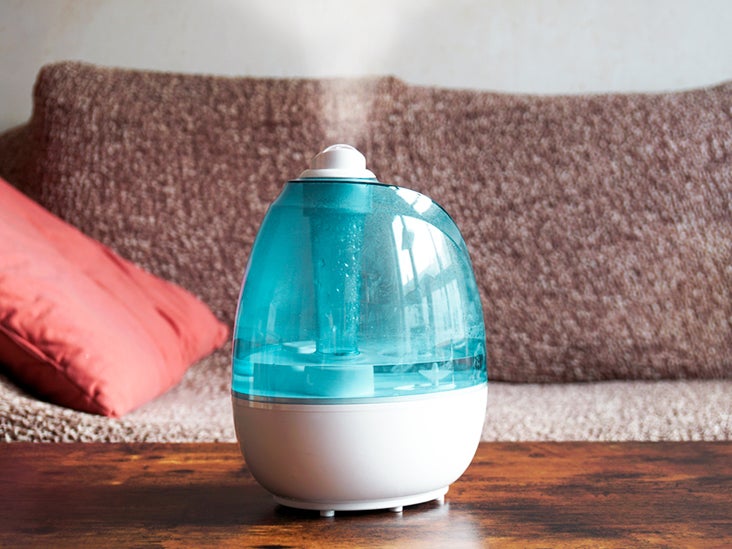Confused about the advantages of using a filterless humidifier? You’re not alone!
A filterless humidifier ensures optimum humidity levels in your home with no hassle. In this guide you will learn everything you need to know to gain the benefits of this great device.
Filterless humidifiers are self-cleaning units that provide added comfort and convenience in your home throughout the year. This guide will introduce you to humidifiers, explain how they work, and discuss the benefits of using a filterless version.
Humidifiers can be used for a variety of reasons, including decreasing indoor air dryness during the winter months and creating an environment conducive to relaxation and sleep. The type of humidifier you choose may depend on your needs – such as size, noise level and control – however filterless humidifiers offer a variety of benefits that can make them a great choice for any home.
This guide will explain why filterless humidifiers have become so popular, their advantages over other types of humidifiers, and how they can help improve your indoor air quality.
Types of filterless humidifiers
Filterless humidifiers come in various shapes, sizes and designs. While the most common type is the evaporative humidifier, there are also ultrasonic and warm mist filterless humidifiers on the market. Each type comes with its own advantages and drawbacks. Let’s take a closer look at each of them.
Evaporative Humidifiers: Evaporative humidifiers work by passing air over a wet filter or wick, which then evaporates into the room as humidity. They use fans to pull in dry air from one side of the device, while moistened pads draw in water from containers on the other side. The filtered air is then directed out into a room as moistened air, which helps to regulate humidity levels without filters or water tanks.
Ultrasonic Humidifier: Ultrasonic humidifiers use high-frequency sound waves to release moisture into the air, making them some of the quietest models currently available on the market. These types of humidifiers don’t require an external filter and can operate for up to 18 hours before needing a refill. When purchasing an ultrasonic model, however, it’s important to keep in mind that they have cooler mist temperatures than those produced by warm mist humidifiers but are much more energy efficient than evaporative and warm mist models due to their low wattage requirements for operation.
Warm Mist Humidifier: Warm mist humidifiers also require no external filters or water tanks and use a heating mechanism to create hot steam that is circulated throughout your home without wearing down filter material as it dissolves into moisture droplets in the air over time. Since they most don’t require any additional filters or replacement parts, this model can be cost-effective over time if used regularly but will not be suitable if you want exceptionally cool ambient temperatures unless you purchase a special cooler model specifically designed for this purpose that features internal cooling elements and insulated heat blower housing).

Ultrasonic humidifiers
An ultrasonic humidifier is one of the most popular filterless humidifier types available on the market. It works by releasing a cool mist into the air, providing moisture in the dry environment. It operates through ultrasonic vibrations that create water droplets, which are then released into the room. This type of humidifier does not require any kind of filters for it to work, and it is highly efficient at producing a moisturizing mist rapidly and silently.
In general, an ultrasonic humidifier is ideal for smaller rooms or spaces since its effectiveness ranges from five to ten square meters (50-100 square feet). It has two different settings—low and high—allowing you to adjust how much humidity you want in your room. Additionally, some models feature adjustable mist levels and timers that allow you to choose how often it runs during specific hours of the day or night.
This type of humidifier also helps keep your space clean and germ-free thanks to its Ultrasonic Technology that prevents bacteria and mold from developing within its tank. Moreover, this technology also helps reduce odor while providing natural disinfection with no additional chemical added into the air.
Impeller humidifiers
Impeller humidifiers are a type of filterless humidifier that uses a rotating disk to add humidity to the air. It works by pulling in air through the unit where it is then dispersed through the rotating disk into tiny droplets. The air is then stocked with moisture and released back into the room.
Advantages of impeller humidifiers include:
- Low-maintenance: As they do not utilize filters, creating no need for regular cleaning or filter replacements.
- Fast moisture dispersion: Impellers provide a fast solution for releasing moisture quickly and efficiently, particularly in larger rooms.
- Quiet operation: This type of humidifier is mostly noise-free, making them suitable even in a bedroom setting where noise can be disruptive.
Benefits of filterless humidifiers
Filterless humidifiers are a great choice for homes because they offer certain advantages over traditional humidifiers. Some of the benefits include:
- Economical: Filterless humidifiers can save you money in the long run because they don’t require the use of filter replacements that are used in other models. This is especially beneficial if you have many rooms or an area with hard-to-reach places that require a greater degree of humidity.
- Quieter Operation: Filterless models are usually quieter than comparable ultrasonic and evaporative models, making them more suitable for living rooms and bedrooms.
- No Germs: Filterless humidifiers don’t use any type of filtration system, which means there is no chance for germs to be trapped inside the machine like they sometimes can be in other models made with filters. This can help ensure your family’s air quality stays at its best level without risking potential germs getting trapped in areas where they can cause illnesses or allergies to flare up.
- Easy Cleaning: Cleaning and maintaining filterless humidifiers is a breeze compared to other types of units as there are no filters to remove and clean separate from the main unit itself. Simply wipe down the surface with warm water and soapy water and your done!
Easy maintenance
Filterless humidifiers offer an easy and effective way to maintain optimal humidity levels in the home. With no filter to replace, they require minimal maintenance. All that is needed is to wipe away any mineral deposits from the device every few days or weeks, depending on use. This can easily be done with a cloth and water or vinegar solution for tougher deposits.
In addition, since there is no filter, it eliminates any potential health issues associated with filters that may contain mold and mildew spores as well as dust mites and other allergens. This can make the air both safer and more comfortable to breathe. Additionally, filterless humidifiers are generally cheaper than those with a filter which makes them an attractive option for many homeowners.
Cost-effective
Filterless humidifiers are typically more cost-effective than traditional humidifiers that require filters. They are also referred to as “no-filter” humidifiers because they don’t need any additional filter cartridges to operate. This type of humidifier is designed with an internal fan and a water reservoir, so you never have to worry about replacing a filter or dealing with the hassle of trying to find the correct size of filter for your unit.
Another great feature of filterless humidifiers is their maintenance schedule; you only have to clean them once every other month, or sometimes even less, depending on the model. This helps reduce operating costs and the time it takes to maintain your unit. Finally, many filterless units come with options such as automatic shut-off or adjustable mist controls which help improve efficiency.
How to use and maintain a filterless humidifier
Using and maintaining a filterless humidifier is relatively straightforward once it is set up. To get the best results from your humidifier, it is important to follow the manufacturer’s instructions carefully. The following are some general guidelines for use and maintenance:
- Before starting the humidifier, check for any water damage barriers or cracks in the unit, and test that all components are in working order before plugging it in.
- Fill the water reservoir with clean water prior to turning on the system. Ensure that you are aware of how much water capacity your unit has as overflowing can cause damage and malfunctioning.
- Connect electrical cords properly before plugging them into outlets to prevent short-circuiting.
- Depending on your model, you may need to adjust a setting to determine how much humidity you want in a room rated on a scale of 0–100%. Make sure you understand how this works before attempting to make an adjustment as too much or too little humidity can be harmful to health.
- Keep evaporator panels clean by wiping off mineral deposits every week or two depending on usage times. Depending on your model, this may be done using distilled white vinegar or cleaning tablets available at hardware stores.
- Replace filters regularly as recommended by manufacturer instructions; some recommend doing this every 1–3 months based upon hours used per month and daily humidity levels requirements in your home/office area(s).
- Maintaining a regular cleaning schedule along with monitoring humidity levels will ensure optimal performance from your filterless humidifier over time. The outdoor air environment in which it is used will also have an impact on the efficiency of its operation, so keep an eye out for any changes that may occur over time that could affect its performance such as dust accumulation or changes in temperature range or local moisture levels due to climate change etc., so that necessary adjustments can be made accordingly.
Step-by-step guide on usage
Filterless humidifiers are ideal for people with allergies, asthma and other respiratory issues. They require minimal maintenance and come in a variety of types, styles and models. If you’re wondering how to use a filterless humidifier correctly, follow these steps:
- Fill the tank with clean, cold water according to manufacturer’s instructions.
- Place the unit where you want it in your home or office space (in accordance with ventilation guidelines provided by the manufacturer).
- Plug the unit into an electrical outlet or turn it on if it has battery power.
- Adjust humidity levels according to temperature and relative humidity desired by using buttons or dials on the humidifier’s control panel. Most filterless humidifiers shut off when they reach the desired level of moisture in the air so there is no need for manual shut off/on.
- Clean detachable parts such as tanks, mists tubes and shelves as per instructions provided by the manufacturer to prevent growth of mold and bacteria buildup in order to maintain hygiene and eliminate odors caused due to excessive moisture levels.
- Replace wick components as per instructions from manufacturer based on usage frequency and environmental factors such as dust, dander etc that accumulate on these areas which can affect liquid dispersion levels inside the unit resulting in potential health hazards if not addressed regularly.

Cleaning and maintenance tips
Cleaning and maintenance of a filterless humidifier is absolutely essential to ensure proper functioning and optimal performance. Depending on the kind of filterless humidifier you have, you may need to perform manual cleaning or use a specific cleaning solution. It’s important to follow the manufacturer’s recommended guidelines for cleaning and maintenance to ensure the safe functioning of your unit.
For portable filterless humidifiers, distilled water should be used as this helps protect the internal components from buildup and sedimentation. Portable filterless humidifiers should also be cleaned after every use to minimize bacteria growth. Additionally, non-porous surfaces can be wiped clean with a clean cloth dampened with vinegar or mild cleanser diluted in water.
For ultrasonic filterless humidifiers, cleaning solutions formulated specifically for ultrasonic models should be used due to their more delicate internal components. These solutions help keep scale build-up at bay and optimize performance of your unit by removing any dirt or grime that has accumulated over time. The cleaning instructions provided by the manufacturer should be followed closely so as not to damage any parts.
It is also vital that you regularly inspect your filterless humidifier for any potential problems such as visible wear, tear or leakage during operation, corroded wiring or electrical components, excess noise from motor operation etc., that could potentially put you at risk of electric shock or short circuit leading to fire hazard if not addressed immediately. Timely servicing and repairs can save you major trouble down the line so it’s important that regular maintenance checks are done in order to keep your unit running safely and efficiently all year round!
Precautions and potential risks
Though filterless humidifiers can be highly beneficial to your health and home, there are some precautions that should be taken when using them. Depending on your water supply and mineral content, you may experience a white residue on furniture and fixtures near the humidifier. If your water contains a high mineral content, you should use distilled or demineralized water in order to prevent this from occurring.
Additionally, too much humidity in an enclosed space may cause mold or bacterial growth. Be sure to regularly check for the presence of either one in order to avoid potential health problems.
Lastly, be sure to turn off your humidifier when not in use and follow the manufacturer’s instructions for cleaning and maintenance. With regular cleaning and proper maintenance, a filterless humidifier can be a great way to improve the air quality of your home and provide countless health benefits.
Over-humidification
Over-humidifying is the term used to describe when you’ve created too humid an environment indoors. This is most common with conventional humidifiers, where an exact level of relative humidity (RH) may not be reached or maintained. In contrast, since filterless humidifiers don’t have a fan and use large amounts of water, they are typically easier to manage as they operate more slowly and with more precision. As a result, it is less likely that they will cause over-humidification indoors.
That said, regular maintenance and change in water levels should still be done to ensure the devices are functioning properly.
Mold growth
Mold growth is a major concern when it comes to filterless humidifiers. The moisture that they produce can cause a buildup of mold, mildew, and other harmful substances in the air. To prevent the growth of mold, many filterless humidifiers come equipped with antimicrobial membranes which help to trap and eliminate these harmful contaminants.
It’s important to regularly clean and maintain your unit to ensure optimal effectiveness of the membrane. Additionally, make sure that you use distilled water when operating a filterless humidifier in order to reduce the risk of bacteria and mold spores growing inside the tank.
By investing in an effective filterless humidifier and properly maintaining it, you’ll be able to enjoy not just easier upkeep but also cleaner air in your home or office.
Conclusion
Filterless humidifiers are an efficient, convenient and easy-to-maintain choice for those looking to improve their home’s air quality. These machines work by releasing a fine mist of clean water into the air and provide relief from dry, stuffy indoor air.
They are low-maintenance and require only the occasional cleaning to prevent bacteria and mold from growing within the reservoir. The use of ultrasonic vibrations to generate mist is what makes them silent and energy efficient, allowing for a peaceful night’s sleep or productive day in the office without having to worry about loud noises.
Overall, filterless humidifiers provide many advantages over traditional filter models, making them an ideal choice for improving humidity levels in indoor environments of any kind.

FAQ’s
Is humidifier with or without filter better?
It depends on personal preference and needs. Filtered humidifiers can remove impurities from the water, while filterless humidifiers require less maintenance and cost less in the long run.
How do filterless humidifiers work?
Filterless humidifiers use a technology that converts water into a fine mist, which is then dispersed into the air to increase humidity levels.
Is it safe to use humidifier without filter?
Yes, it is safe to use a filterless humidifier as long as the manufacturer’s instructions are followed and the unit is cleaned regularly.
How often should you clean a filterless humidifier?
A filterless humidifier should be cleaned at least once a week to prevent the growth of bacteria and mold.
Is it OK to use humidifier daily?
Yes, it is safe to use a humidifier daily, as long as the humidity levels are kept within a healthy range.
Can you use tap water in a filterless humidifier?
Yes, tap water can be used in a filterless humidifier, but it may lead to mineral buildup over time. Using distilled or purified water can help prevent this issue.
How do you clean a filterless humidifier?
To clean a filterless humidifier, you should empty any remaining water, wipe down the interior with a soft cloth, and use a solution of water and vinegar or hydrogen peroxide to disinfect.
How do you clean a filterless mist humidifier?
To clean a filterless mist humidifier, you should follow the manufacturer’s instructions, which may involve removing the nozzle and soaking it in vinegar or using a specialized cleaning solution.
Can humidifier purify the air?
While humidifiers can improve air quality by adding moisture to the air, they do not purify the air by removing pollutants or allergens.
Can I use water instead of humidifier?
No, water cannot replace a humidifier, as it cannot provide the same level of control over humidity levels and may not be effective in increasing humidity in a large space.
See Also :
- Best hedge shears
- Best whole house dehumidifier
- Best water vacuum cleaner
- Best vacuum for long hair
- Best vacuum for laminate floors

